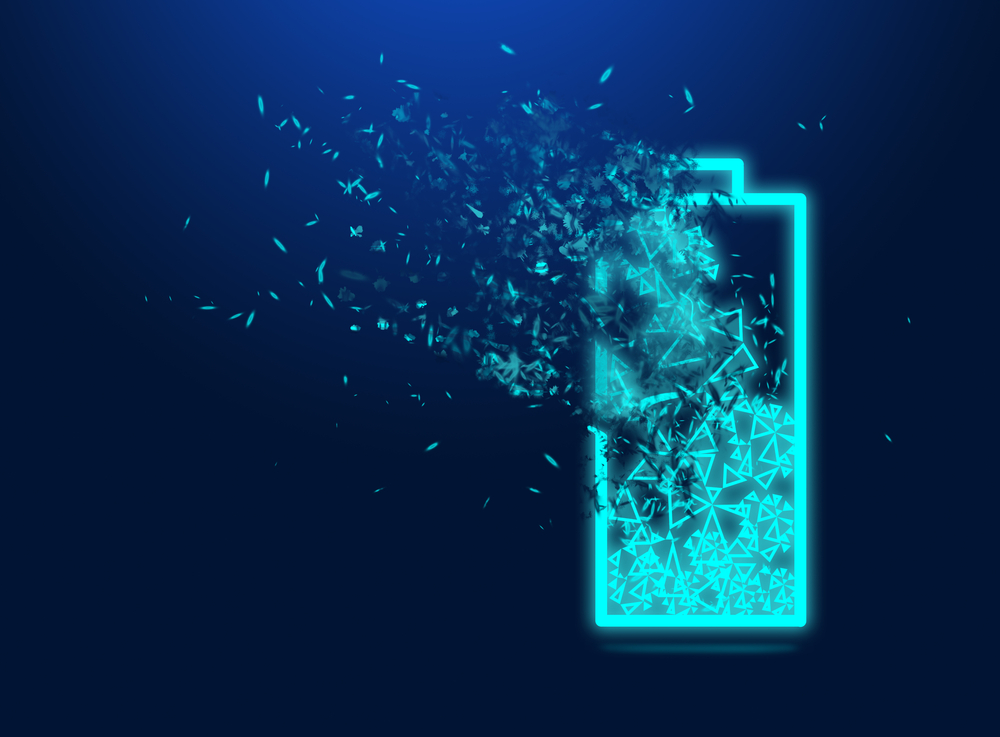
Image Credit: New Africa/Shutterstock.com
Unlike conventional carbon electrodes that are made of additives, binders and powders, a new electrode from NAWA Technologies is made of billions of functionalized, vertically aligned carbon nanotubes, allowing for higher electric and ionic thermal conductivities.
The Fastest Electrode in the World
The French company claims its electrode technology has the world’s highest electrical and ionic conduction in charge and discharge, making it the fastest electrode globally.
NAWA has said it is already producing electrodes with carbon nanotubes for batteries that could provide up to three times the energy density and ten times the power. This translates to much faster charging times and as up to five times longer battery lifespans.
In activated carbon electrodes, structural factors mitigate ion insertion at every step of the charging process. Nano-confined, vertically aligned carbon nanotubes allow for increased ion mobility. For instance, when an activated carbon electron reaches the current collector, it is slowed by the binder material. Conversely, an ultra-fast carbon nanotube battery would not face this resistance with its more accessible current collector.
According to NAWA, vertically aligned carbon nanotubes are essential to creating an ultra-fast carbon nanotube battery. Where carbon nanotubes are generally used in an electrode, they are in a disorderly, tangled arrangement. This causes charge-carrying ions to navigate an arbitrary, cluttered and frequently obstructed road to the current collector.
However, NAWA's vertically aligned carbon nanotubes are in an ordered structure that resembles a large hairbrush. Each nanotube in the electrode is coated with active material, such as lithium-ion or silicon.
The straight channels found in the NAWA electrode cut the distance ions, which have to travel 10 to 100 times, with no increase in volume.
The end result is a profound lowering of ions' average free path, the length a charge must travel to enter or leave an ultra-fast carbon nanotube battery. Because the active material coating is directly connected to each nanotube, it establishes a direct lane to the current collector. For a battery, this would increase the power density by as much as 10 times, translating to more power and faster charge-discharge times.
Since there are also spaces in the electrode's ultralight nanotube scaffold and less additive components, a battery made mostly of active material is more compact and lighter, resulting in a two- to threefold increase in energy density.
The world's fastest electrode
Video Credit: NAWA Technologies/YouTube.com
The firm structure and larger surface area of the NAWA vertically aligned carbon nanotubes and the wide distribution of active material eliminate several issues that cause batteries to lose performance and slowly fail. According to the company, an ultra-fast carbon nanotube battery made with the novel electrode technology has a lifespan five times longer than batteries made with conventional electrodes.
How does NAWA Technologies Keep Costs of Ultra-Fast Carbon Nanotubes Batteries Down?
A significant problem facing the commercialization of this technology is cost. Specifically, the cost of vertically arranged carbon nanotubes can drive up costs by as much as 10 times. NAWA has said it can keep costs down by using a method similar to the one used for applying anti-reflective coatings for photovoltaics and eyeglasses, which is only a handful of cents per square meter.
Given the financial viability, the French company has moved into full production of the new electrode, making them for its ultracapacitors line. NAWA also noted that the electrode technology can be used in ultra-fast carbon nanotube batteries of many different shapes and sizes.
The NAWA electrode is not confined to lithium-ion batteries. It can be used with many different active materials, most notably silicon. Batteries made with silicon could potentially provide double the energy density of lithium-ion batteries. The main problem with silicon is that it expands four times in size when it is fully charged. This mechanical issue can result in battery-destroying cracks. The Nawa electrode technology may enable the use of silicon because it is based on tiny coatings of active material, which would have considerable room to expand. Carbon nanotubes are also highly resistant to cracking.
If ultra-fast carbon nanotube batteries using silicon becomes viable, it would allow for an energy density that is about six times that of lithium-ion batteries at a fraction of the cost, given the high price of lithium.
NAWA officials have said a basic rendition of their new technology will likely be on the market by 2022, and a more fully realized ultra-fast carbon nanotube battery could be on the market in 2023. Bringing the technology to the market will be based on collaboration with lithium battery companies.
The French company has already been recognized for its ultracapacitor technology. It has announced that the new electrode technology currently being applied to its ultracapacitors can quickly adapt to modern lithium-ion batteries.
As groundbreaking as this technology may be for electric vehicles, it could also represent an enormous leap forward for aviation. Currently, the energy density, charging times, and lithium-ion batteries' weight are serious issues for the commercial feasibility of zero-emission aircraft.
Resources and Further Reading
Blain, L. "World's fastest electrodes" triple the density of lithium batteries. New Atlas. [Online} Available at: https://newatlas.com/energy/nawa-vertically-aligned-carbon-nanotube-electrode/
NAWA Technologies – English language website. [Online] Available at: https://www.nawatechnologies.com/
Disclaimer: The views expressed here are those of the author expressed in their private capacity and do not necessarily represent the views of AZoM.com Limited T/A AZoNetwork the owner and operator of this website. This disclaimer forms part of the Terms and conditions of use of this website.